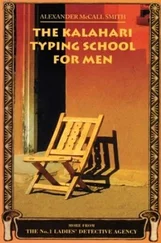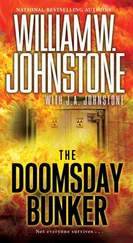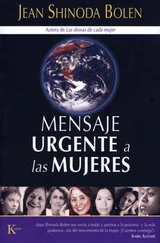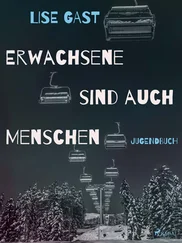By the end of 1897, Marie Curie had just given birth to her first child, Irène. The 30-year-old chemist was now on the lookout for a suitable subject for her doctoral thesis. She was intrigued by the idea of Becquerel rays, and set about investigating them by testing as many metals and minerals as she could. Both Becquerel rays and X-rays had the unusual effect of enabling air to conduct electricity, and Curie began looking for elements with this property. She soon found that the dark, lustrous mineral pitchblende, which contains uranium, made air more conductive than pure uranium. This suggested the presence of some other element that was a more powerful emitter of Becquerel rays than even uranium. Curie had found a subject for a doctorate: isolating whatever substance was responsible, and explaining the phenomenon that Becquerel had discovered. She set to work using pitchblende from the mines of St Joachimsthal in Bohemia (Jáchymov in today’s Czech Republic).
Ernest Merritt, Professor of Physics at Cornell University, introduced Marie Curie’s discoveries to the readers of a contemporary popular magazine. He came up with an apt analogy to describe the difficulty of the task Curie faced in separating radium from pitchblende. Her job, he said, was like that of a ‘detective who starts out to find a suspected criminal in a crowded street’. Pitchblende, a heavy brown-black uranium ore, is ‘one of the most complex of minerals, containing twenty or thirty different elements, combined in a great variety of ways’. 20There is a single gram of radium in seven tons of pitchblende. But Marie Curie was a remarkable and tenacious chemical detective.
Merritt’s article was accompanied by two striking illustrations. One was a photograph of a chunk of pitchblende in normal light. The other was rather more dramatic. It was taken by placing the rock directly onto a photographic plate. No camera was used: the Becquerel rays themselves made the exposure. In this photograph, said Merritt, ‘every crack and seam where radium is present has made its impression, while the ordinary rock in which the ore is embedded has left no trace’. 21This rock looks like a volcano at night, with glowing lava streaming down its fissures. The photograph creates an eerie impression, and powerfully evokes the hidden forces within matter. Many of the first fictional descriptions of atomic explosions would liken them to erupting volcanoes.
Formed billions of years ago in the hearts of stars which exploded as supernovae, blasting their contents through our Galaxy, uranium provides the main source of heat within our planet. The heat from its radioactive decay also drives the tectonic shifting of the continents. Ironically, given the future importance of uranium in the development of nuclear weapons, Merritt comments: ‘If uranium had proved to be the only radioactive substance, I doubt whether the subject would have aroused very general interest.’ It seems scarcely believable, but in 1904, uranium seemed a rather unexciting element. In contrast, the properties of radium were dramatic and, most importantly for the media, photogenic. For as Professor Merritt commented dryly, ‘the scientific investigator is by no means devoid of the taste for something sensational’. 22
By the end of 1898, Marie Curie had returned from what Merritt called her ‘journey into an unexplored land’ with truly sensational news – not one but two new elements. 23It had taken her a year. The first one she named polonium, in honour of her Polish homeland. The other she called radium, from the Latin for ray, radius . In her scientific papers announcing the new elements, she also coined the term ‘radioactivity’.
Polonium is more radioactive than radium or uranium. A milligram of polonium-210 emits as many alpha particles as 5 grams of radium. A capsule containing half a gram of polonium-210 can reach a temperature of 500°C and provide a lightweight heat source to power thermoelectric cells in artificial satellites. But polonium is also more difficult to isolate. There are about 100 micrograms in a ton of uranium ore. Isolating it is like finding a grain of salt in a sack of sugar.
Like polonium, radium is luminescent, and has a blue glow. ‘The light given out is sometimes so bright that it is possible to read by it,’ Merritt told his readers. 24Marie Curie once talked about the joy she felt on entering her laboratory at night and seeing the rows of faintly glowing tubes. They were like fairy lights, she said. She even used to keep some radium salts by her bed so she could see it glowing in the dark – an atomic nightlight. Radium metal is pure white but blackens in air. It emits alpha, beta and gamma rays. Radium-226 loses just 1 per cent of its radioactivity in 25 years, decomposing ultimately into lead. Its rays cause diamonds to shine ‘with a clear phosphorescent light’. 25Imitation stones do not, as more than one shocked lady attending a lecture on radium discovered to her cost. But radium rays are also dangerous. Marie and Pierre Curie soon found that exposure for just five minutes was enough to produce nasty sores, although strangely these did not appear for several days.
From 1899, Marie Curie worked her way through tons of pitchblende, delivered to her from the St Joachimsthal mine. Mixed in with the sackfuls of reddish-brown dust were pine needles from the Bohemian forest where the pitchblende had been dumped after the uranium had been extracted. Marie did the chemical work of separation while Pierre concentrated on the theoretical physics. The Ecole de Physique et de Chimie Industrielles in Paris, where Pierre taught, gave the Curies a disused medical dissection room to work in. Marie described it as ‘a wooden shed with a bituminous floor and a glass roof which did not keep the rain out’. 26The Chemist Wilhelm Ostwald called it a cross between a stable and a potato shed. Boiling hot in summer and freezing in winter, it was totally inadequate as a laboratory. But Marie Curie was not one to complain.
Although she appeared shy and reserved to those who met her for the first time, Curie was in fact a determined and single-minded woman. By all accounts she relished what was a formidable challenge of separating out the new elements: ‘I had to work with as much as 20 kilograms of material at a time, so that the hangar was filled with great vessels full of precipitates and of liquids. It was exhausting work to move the containers about, to transfer the liquids, and to stir for hours at a time, with an iron bar, the boiling material in the cast-iron basin.’ 27
It took Marie Curie almost four years of back-breaking work to isolate one-tenth of a gram of radium chloride. By July 1902, she had enough to convince even the sceptical world of science ‘that radium is truly a new element’. 28The result of her dangerous labours was a rather ordinary-looking substance: white crystals, like coarse-grained salt. But as Merritt told his readers in 1904, ‘a pinch of this innocent-looking salt costs more than a thousand dollars’. 29Radium was at least a hundred times more valuable than gold. 30This was far more than even the alchemists could have dreamed of. But more important than its monetary value was the wealth of knowledge it promised. As one contemporary put it, locked up in this ‘strange substance’ were all ‘the riddles of matter and energy’. 31
The twentieth century has been called the century of the electron, the subatomic particle that makes possible our electronic computer age. In the year that Marie Curie began her search for new radioactive elements, on the other side of the English Channel a Cambridge physicist, J. J. Thomson, made the first discovery of a particle smaller than an atom – the negatively charged electron. It enabled Thomson to construct a theory of atomic structure that would later become known by the rather wonderful name of the plum pudding model (or, as Thomson himself put it rather less memorably, ‘a number of negatively electrified corpuscles enclosed in a sphere of uniform positive electrification.’ 32)
Читать дальше












